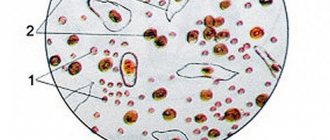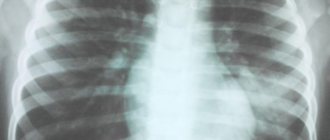PRIVACY POLICY
1. BASIC CONCEPTS Website is a personal website (indicate the affiliation of the site), located on the Internet at the address: www.begma.ru. Site Administration – IP Smirnova Lyudmila Petrovna644 048 Omsk, st. Angarskaya 2 sq. 8. User – an individual or legal entity who has posted his personal information through the Feedback Form on the site with the subsequent purpose of transferring data to the Site Administration. Feedback form is a special form where the User places his personal information for the purpose of transferring data to the Site Administration. 2. GENERAL PROVISIONS 2.1. This Privacy Policy is an official standard document of the Site Administration and determines the procedure for processing and protecting information about individuals and legal entities using the Feedback Form on the Site. 2.2. The purpose of this Privacy Policy is to ensure adequate protection of information about the User, incl. his personal data from unauthorized access and disclosure. 2.3. Relations related to the collection, storage, distribution and protection of information about users are governed by this Privacy Policy and the current legislation of the Russian Federation. 2.4. The current version of the Privacy Policy is a public document, developed by the Site Administration and is available to any Internet User by clicking on the “Privacy Policy” hypertext link. 2.5. The Site Administration has the right to make changes to this Privacy Policy. 2.6. When changes are made to the Privacy Policy, the Site Administration notifies the User by posting a new version of the Privacy Policy on the Site www.begma.ru. 2.7. When a new version of the Privacy Policy is posted on the Site, the previous version is stored in the documentation archive of the Site Administration. 2.8. By using the Feedback Form, the User agrees to the terms of this Privacy Policy. 2.9. The Site Administration does not verify the accuracy of the information received (collected) about the User. 3. CONDITIONS AND PURPOSE OF COLLECTION AND PROCESSING OF USERS' PERSONAL DATA 3.1. Personal data of the User such as: first name, last name, patronymic, e-mail, telephone, skype, etc., are transferred by the User to the Site Administration with the consent of the User. 3.2. The transfer of personal data by the User to the Site Administration through the Feedback Form means the User’s consent to the transfer of his personal data. 3.3. The Site Administration processes information about the User, incl. his personal data, such as: first name, last name, patronymic, e-mail, telephone, skype, etc., as well as additional information about the User provided by him at his own request: organization, city, position, etc. in order to fulfill obligations to User of the Site. 3.4. The processing of personal data is carried out on the basis of the principles: a) the legality of the purposes and methods of processing personal data and good faith; b) compliance of the purposes of processing personal data with the goals predetermined and stated when collecting personal data; c) compliance of the volume and nature of the processed personal data with the methods of processing personal data and the purposes of processing personal data; d) the inadmissibility of combining databases containing personal data created for incompatible purposes. 3.5. The Site Administration processes the User’s personal data with his consent for the purpose of providing services/selling goods offered on the Site. 4. STORAGE AND USE OF PERSONAL DATA The User’s personal data is stored exclusively on electronic media and is used strictly for the purpose specified in clause 3 of this Privacy Policy. 5. TRANSFER OF PERSONAL DATA 5.1. The User's personal data is not transferred to any third parties, except for the cases expressly provided for in this Privacy Policy and specified in the Consent to the newsletter.
5.2. The provision of the User’s personal data at the request of state bodies and local governments is carried out in the manner prescribed by the legislation of the Russian Federation. 6. STORAGE TERMS AND DESTRUCTION OF PERSONAL DATA 6.1. The User’s personal data is stored on the website’s electronic media indefinitely. 6.2. The User’s personal data is destroyed at the request of the User himself based on his request, or at the initiative of the Site Administrator without explanation, by deleting the information posted by the User by the Site Administration. 7. RIGHTS AND OBLIGATIONS OF USERS Users have the right, upon request, to receive from the Site Administration information regarding the processing of their personal data. 8. MEASURES TO PROTECT USER INFORMATION The Site Administrator takes technical, organizational and legal measures to ensure the protection of the User’s personal data from unauthorized or accidental access to it, destruction, modification, blocking, copying, distribution, as well as from other unlawful actions. 9. USER REQUESTS 9.1. The User has the right to send his requests to the Site Administration, incl. regarding the use/deletion of his personal data, provided for in clause 3 of this Privacy Policy in writing to the address specified in clause 1. 9.2. The request sent by the User must contain the following information: for an individual: – number of the main document identifying the User or his representative; – information about the date of issue of the specified document and the issuing authority; – date of registration via the Feedback Form; – text of the request in free form; – signature of the User or his representative. for a legal entity: – request in free form on company letterhead; – date of registration via the Feedback Form; – the request must be signed by an authorized person accompanied by documents confirming the person’s authority. 9.3. The Site Administration undertakes to consider and send a response to the User's request within 30 days from the date of receipt of the request. 9.4. All correspondence received by the Administration from the User (applications in written/electronic form) refers to restricted information and is not subject to disclosure without the written consent of the User. Personal data and other information about the User who sent the request cannot be used without the special consent of the User other than to respond to the topic of the received request or in cases expressly provided for by law.
What to do if the stitch breaks after surgery
After the operation, many people experience worries: will everything be fine, and will the seam come apart? In practice, this happens quite rarely, but no one is immune from such a nuisance. Most often, the cause of suture dehiscence is non-compliance with the surgeon’s basic instructions. However, there are other reasons. Today, Ph.D., plastic surgeon Lyubov Nikolaevna Gower will tell us about what to do in a situation where, after surgery, a suture suddenly diverges.
Lyubov Gower, PhD, plastic surgeon
How does a person whose suture has come apart after surgery feel? Of course he is stressed. Therefore, the first advice that can be given to a patient is to never panic. First of all, you need to examine the wound and assess the damage. After this, the best solution would be to immediately contact a surgeon.
For what reason? Surgical sutures are divided into two types: internal (necessary for the strength of tissue connections) and external (used for temporary fixation of the skin). Suture dehiscence is quite rare. The main reasons for this may be:
- certain loads;
- chronic diseases in the patient;
- elderly age;
- smoking;
- diabetes;
- exceeding the weight limit;
- wound infection
- lack of vitamins necessary for the body, etc.
The symptoms of seam dehiscence are very simple. Severe pain, bleeding, swelling, redness, etc. are possible. In fact, it is not so important why exactly the seam came apart. At this stage, it is much more important to solve the problem: what to do about it?
What to do? If such a nuisance happens, then you shouldn’t worry too much and be nervous. Suture dehiscence after surgery is not considered a serious complication. However, if the wound is bleeding, and the tissues around it are red and swollen, you should urgently contact your doctor who will help eliminate this problem. First of all, the specialist will assess the “scale of the disaster,” that is, examine the condition of the wound. In individual cases, the doctor may prescribe additional tests, such as a blood test or computed tomography. The latter is needed in order to determine the focus of pus accumulation.
If for some reason it is impossible to seek help from your attending physician, then you should contact the clinic where the operation was performed. Only qualified specialists can prescribe the correct treatment.
If the wound is shallow, with a small number of discrepancies, then after pain relief, stitches are placed on it again. If inflammatory processes have begun in the wound, you must first wait for it to heal. At this time, the wound is treated with certain solutions and ointments that promote rapid regeneration of wound edges. Subsequently, the damaged edges of the wound are excised so that they are clear and not tortuous. After this, secondary sutures are applied to the wound area with cut surfaces.

Depending on the size of the wound, the doctor makes a verdict. Sometimes the surgeon decides that it is better not to re-stitch the wound, but to let the wound heal. Usually, in this case, a specialist advises washing the wound itself with hydrogen peroxide or chlorhexidine. If the wound is serious, the specialist re-stitches it. All recommendations that were issued after the first operation remain in force. If inflammation forms in the wound, a decision may be made to suture it incompletely. The open area should be treated as a wound, and the stitched area as a suture.
To remove infection and inflammation, it is recommended to carefully care for the damage. Care includes treating the wound with special antiseptic agents. Do not try to peel the gauze bandage from the skin. This may harm your wound. It is recommended to simply soak the bandage in a 3% hydrogen peroxide solution and it will come off by itself.
Many people believe that the longer they keep the wound closed, the faster it will heal. However, this is not at all true. For speedy healing, the wound needs air. Therefore, the bandage must be removed from time to time.
After surgery, a person’s immunity is most often weakened, so the patient is often prescribed special multivitamin preparations that strengthen the body.
Just in case. Of course, no one is immune from such a nuisance as seams coming apart. However, in many cases this problem can be avoided. In order to prevent seam divergence, you need to follow simple tips. Firstly, you must follow all the doctor's recommendations. Secondly, you should always keep the bandage clean so that the wound does not get infected, and wear a postoperative bandage. It is also necessary to treat the seams with antiseptics and maintain hygiene. The main thing to remember is that you do not need to self-medicate. These seemingly simple tips will help in the future to prevent such troubles as seam splitting.
Risk of general anesthesia
Before the operation, the anesthesiologist who administers anesthesia examines the patient, asks him about his medical history and life, clarifies the presence of allergies to medications, and assesses the surgical and anesthetic risk. Complications occur more often in older people and patients with concomitant diseases. Common complications include nausea, vomiting, urinary retention, sore throat and headache. More serious problems include heart attack, stroke, pneumonia, blood clots in the deep veins of the lower extremities, and thromboembolism.
Early activation after surgery, as soon as your doctor allows, will help reduce the risk of complications such as pneumonia and blood clots.
Indirect inguinal hernia
Indirect inguinal hernias are congenital hernias and are much more common in men than in women due to the characteristics of intrauterine development of the fetus. In the male fetus, the spermatic cord and both testicles usually descend through the inguinal canal into the scrotum. Sometimes the inguinal rings do not close properly immediately after birth, leaving a weak spot in the abdominal wall. The greater omentum or small intestine can slip through a weak inguinal ring into the inguinal canal, causing a hernia to form. Indirect hernias are the most common type of inguinal hernia. Premature babies are at particular risk for indirect inguinal hernia because they have less time after birth for the inguinal canal to close.
Direct inguinal hernia
Direct inguinal hernias occur due to degeneration of connective tissue and weakening of the abdominal wall muscles in adulthood. Direct inguinal hernias occur only in men. Hernias involve the greater omentum or small intestine. Direct hernias develop gradually against the background of muscle overload and weakening of the connective tissue structures of the abdominal wall. One or more of the following factors may cause a hernia:
- sudden twists or muscle strains
- lifting heavy objects
- tension on the toilet due to constipation
- weight gain
- chronic cough
Indirect and direct inguinal hernias usually slide easily back and forth through the inguinal canal and can be easily reduced back into the abdominal cavity with gentle massage.










